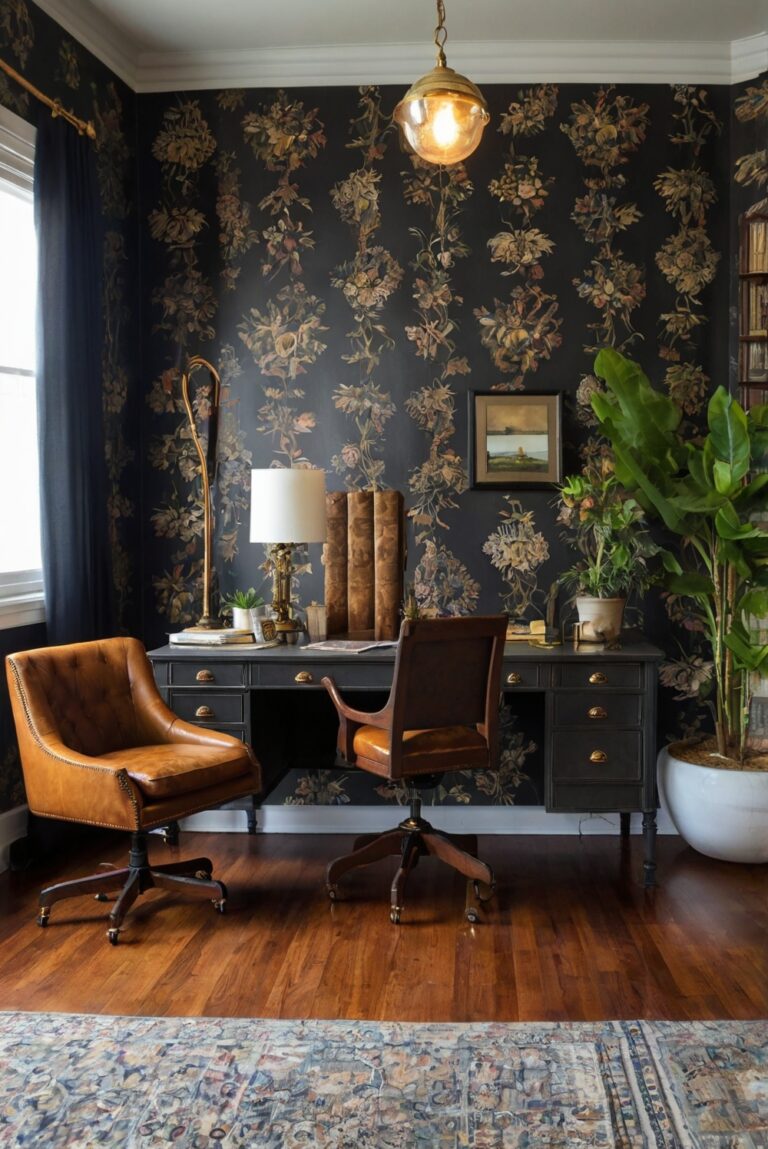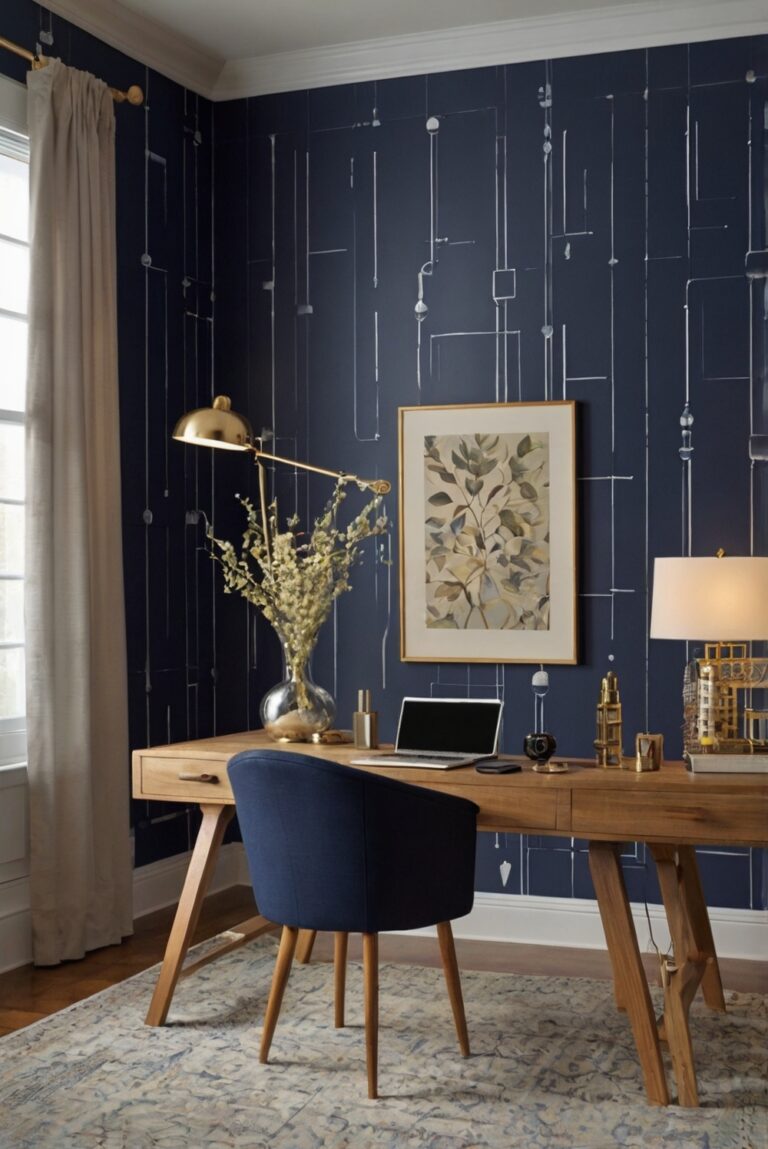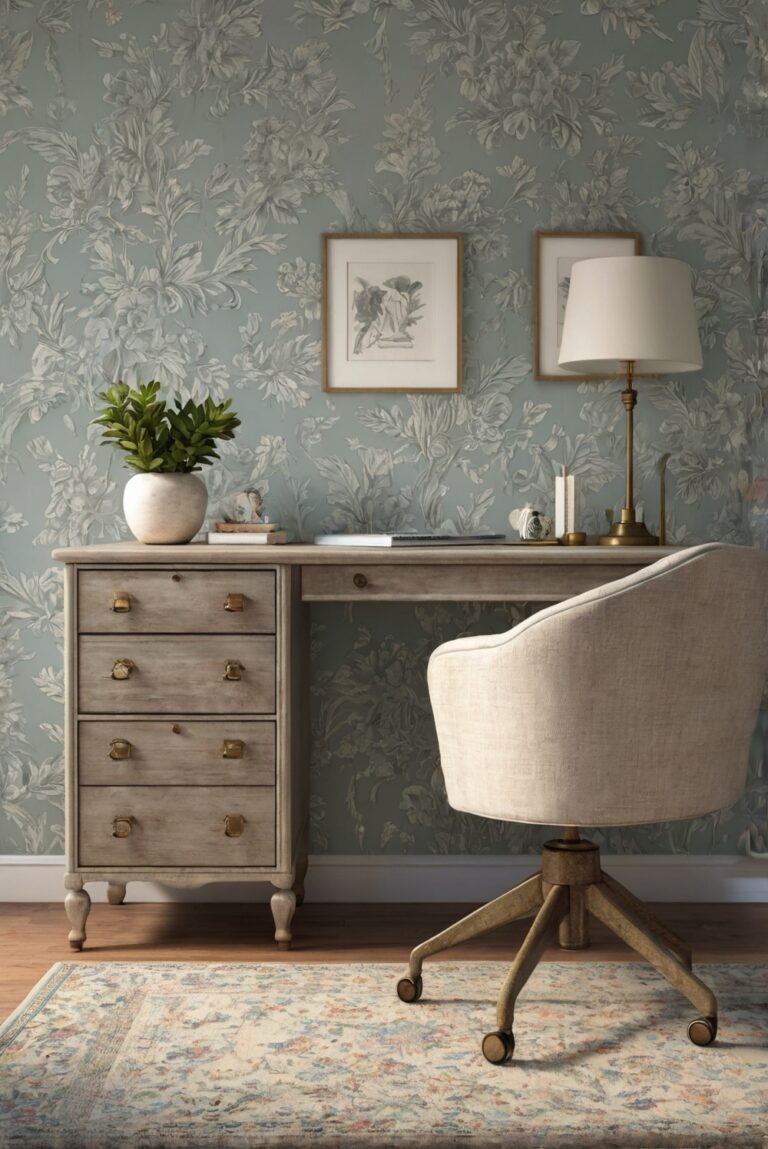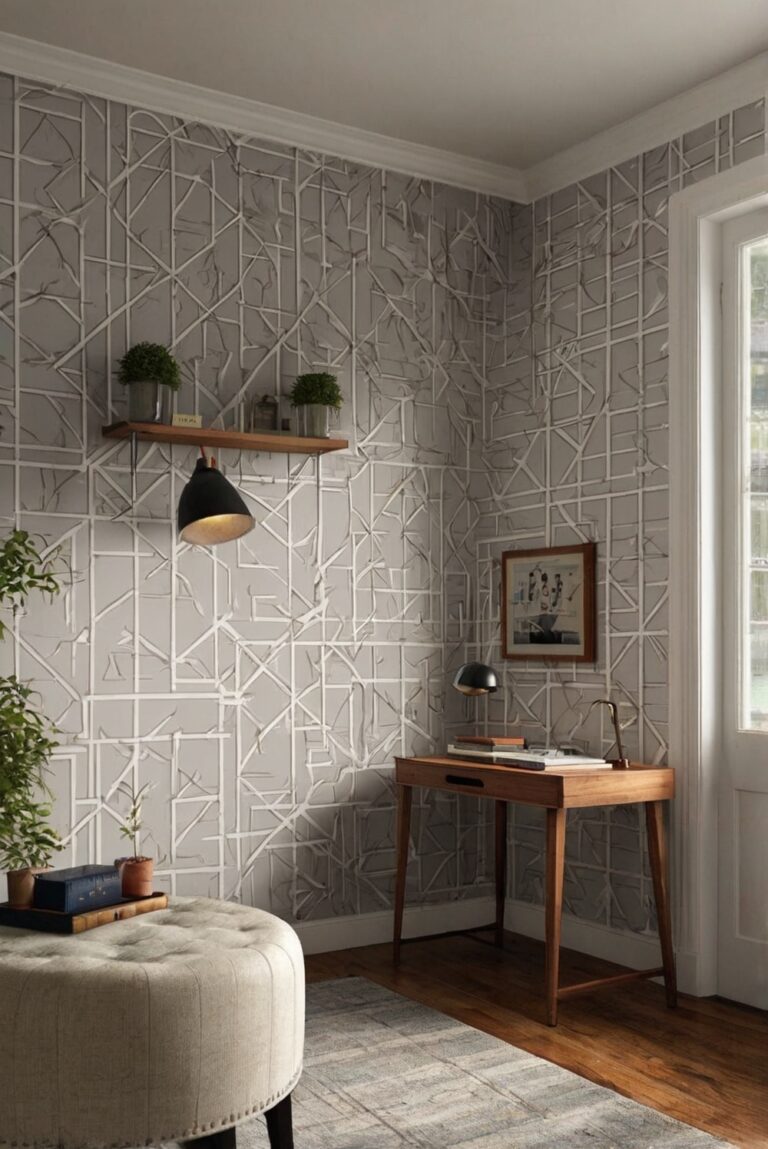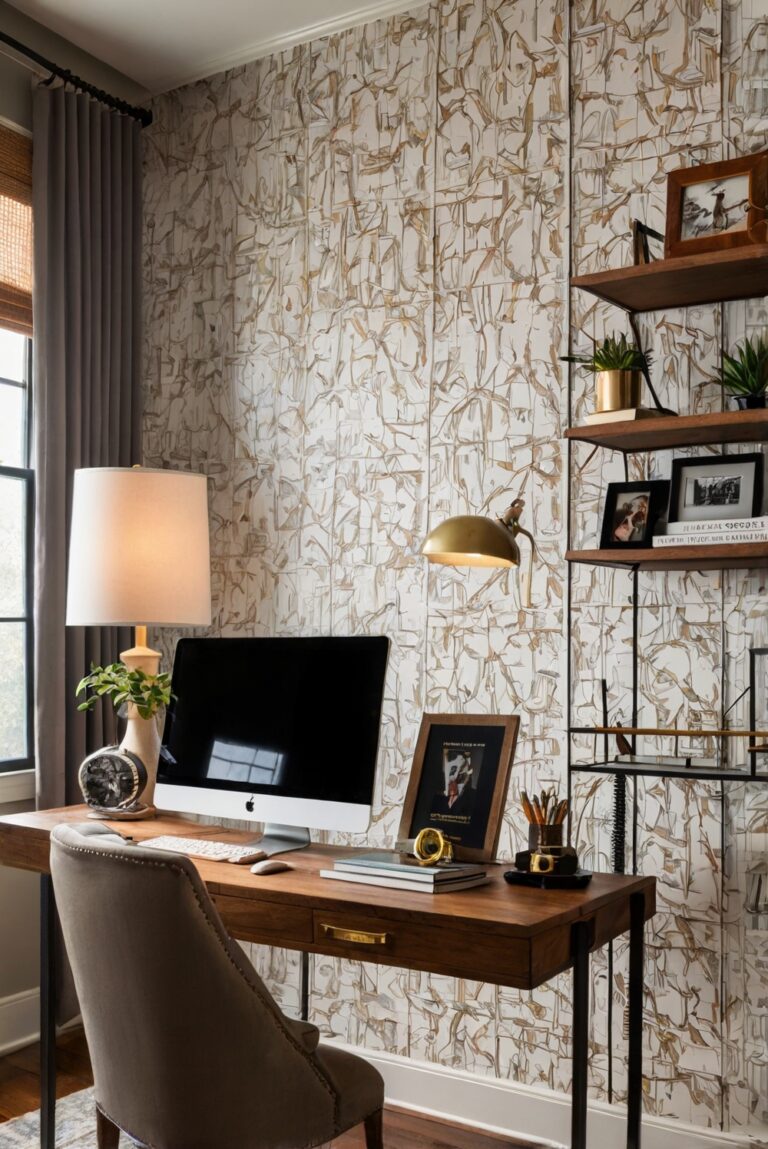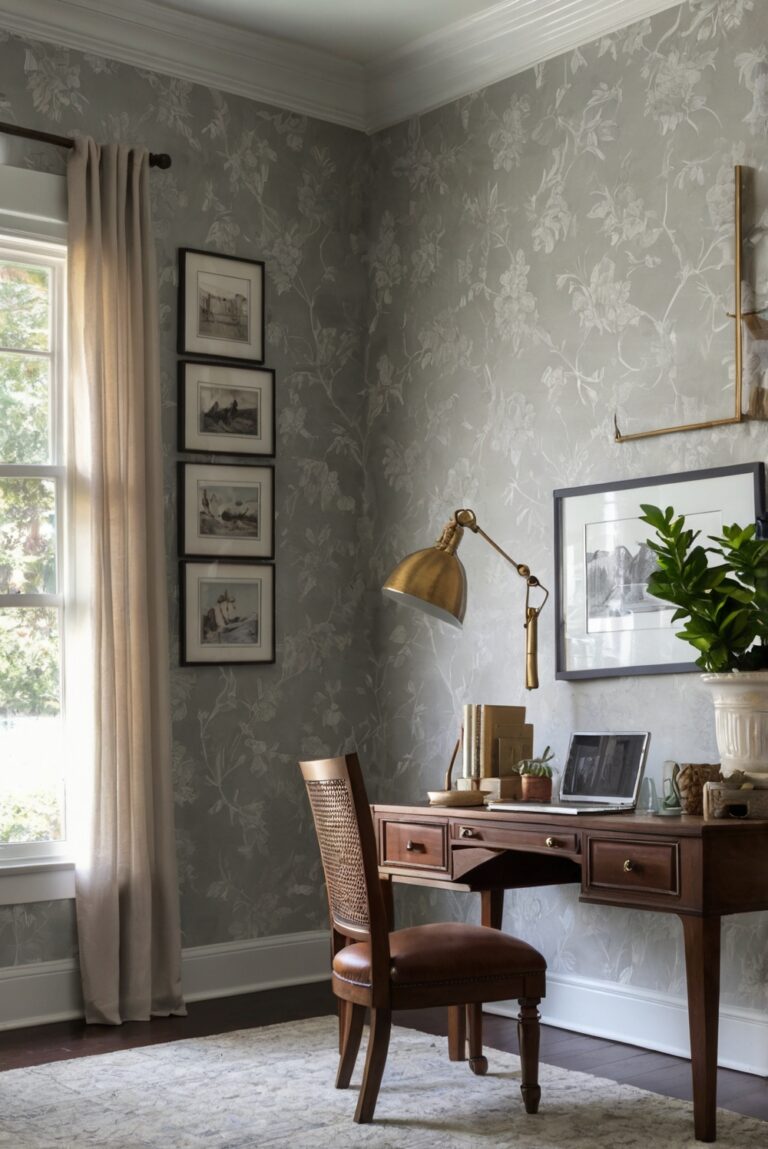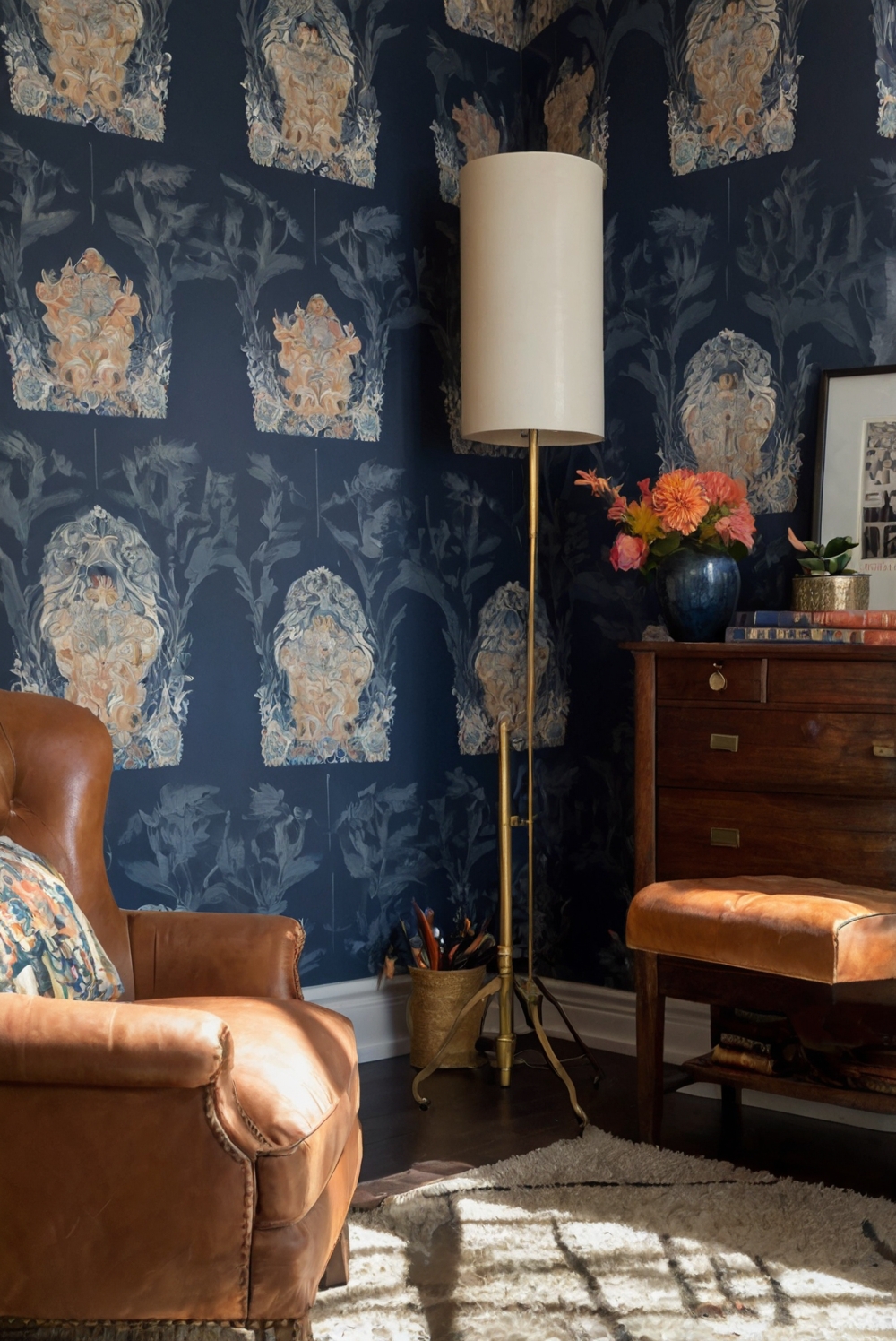
Discover creative ways to use wallpaper for texture in your home office. Learn how to enhance your space with this interior designer routine.
To add texture to your home office walls using wallpaper, follow these steps:
1. Choose a wallpaper with a textured design that fits your home decor interior design.
2. Measure your walls and ensure you have enough wallpaper to cover the space.
3. Remove any existing wallpaper or primer paint for walls before applying the new wallpaper.
4. Use primer paint for walls to create a smooth surface for the wallpaper to adhere to.
5. Carefully match the wallpaper seams for a seamless look in your space planning.
6. Consider using a professional designer for wall paint color matching to ensure a cohesive look.
7. Enjoy the added texture and visual interest the wallpaper brings to your home office interior design.
By following these steps, you can successfully use wallpaper to enhance the texture of your home office walls.
1. Choose the Right Wallpaper:
When using wallpaper to add texture to your home office walls, it is crucial to choose the right wallpaper. Consider the style of your office and the atmosphere you want to create. Look for wallpapers with interesting textures, patterns, and colors that complement your existing decor. Textured wallpapers such as grasscloth, linen, or embossed designs can add depth and dimension to your walls.
2. Prepare the Walls:
Before applying the wallpaper, make sure to properly prepare the walls. Smooth out any imperfections and ensure the surface is clean and dry. This will help the wallpaper adhere better and prevent any bubbles or wrinkles from forming. If needed, apply a primer to create a smooth base for the wallpaper.
3. Measure and Cut the Wallpaper:
Measure the walls carefully and cut the wallpaper accordingly. Make sure to leave a little extra at the top and bottom for trimming. It’s important to match the patterns correctly if you are using a patterned wallpaper. Use a sharp utility knife to cut the wallpaper neatly.
4. Apply the Wallpaper:
Once you have prepared the walls and cut the wallpaper, it’s time to apply it. Follow the manufacturer’s instructions for the specific type of wallpaper you are using. Use a good quality wallpaper adhesive and start applying the wallpaper from the top, working your way down. Smooth out any bubbles or wrinkles as you go.
5. Finishing Touches:
After the wallpaper is applied, make sure to trim any excess at the top and bottom carefully. Use a sharp blade and a straight edge for clean cuts. Smooth out the edges with a wallpaper smoother or a clean, damp sponge. Allow the wallpaper to dry completely before moving furniture back into place.
In conclusion, using wallpaper to add texture to your home office walls can be a great way to enhance the look and feel of the space. By choosing the right wallpaper, preparing the walls properly, and applying the wallpaper correctly, you can create a stylish and inviting environment to work in. Don’t forget to pay attention to the details and finishing touches to ensure a professional-looking result.
1. What are some popular types of textured wallpaper for home office walls?
Textured wallpaper comes in various styles, such as grasscloth, embossed, faux brick, and geometric patterns. Grasscloth wallpaper adds a natural and earthy texture, while embossed wallpapers have raised patterns for a three-dimensional effect. Faux brick wallpapers create an industrial look, while geometric patterns offer a modern touch. Choosing the right type of textured wallpaper can enhance the visual appeal of your home office walls and create a unique ambiance that suits your personal style.
2. How can I incorporate textured wallpaper into my home office design?
To add texture to your home office walls using wallpaper, consider using it as an accent wall or on all walls for a cohesive look. You can also mix and match different textured wallpapers to create a layered effect. Additionally, combining textured wallpaper with solid colors or other patterns can help balance the overall design of your home office. Experimenting with different textures and colors can help you achieve a personalized and visually appealing space that boosts creativity and productivity.
3. Are there any tips for installing textured wallpaper on home office walls?
Before installing textured wallpaper, make sure to properly prepare the walls by cleaning and smoothing any imperfections. It’s also essential to measure and cut the wallpaper accurately to ensure a seamless application. Using a good quality wallpaper adhesive and following the manufacturer’s instructions can help prevent bubbles or wrinkles during installation. Additionally, allowing the wallpaper to properly dry and settle can ensure a long-lasting and professional finish that enhances the texture of your home office walls.
4. How can I maintain textured wallpaper on my home office walls?
To maintain textured wallpaper on your home office walls, avoid using harsh cleaning products that can damage the texture or color of the wallpaper. Instead, gently dust or vacuum the wallpaper to remove any dirt or debris. In case of stains or spills, use a mild soap and water solution to spot clean the affected area. It’s also important to avoid direct sunlight or excessive moisture, as these can cause the wallpaper to fade or peel over time. By following these maintenance tips, you can preserve the texture and appearance of your textured wallpaper for years to come.
5. What are the benefits of using textured wallpaper in a home office?
Using textured wallpaper in a home office can help create a visually interesting and stimulating environment that promotes productivity and creativity. The texture adds depth and dimension to the walls, making the space feel more inviting and dynamic. Additionally, textured wallpaper can serve as a focal point or design element that enhances the overall aesthetic of your home office. Whether you prefer a subtle texture or a bold pattern, incorporating textured wallpaper can transform your workspace into a stylish and inspiring area where you can work comfortably and efficiently.

